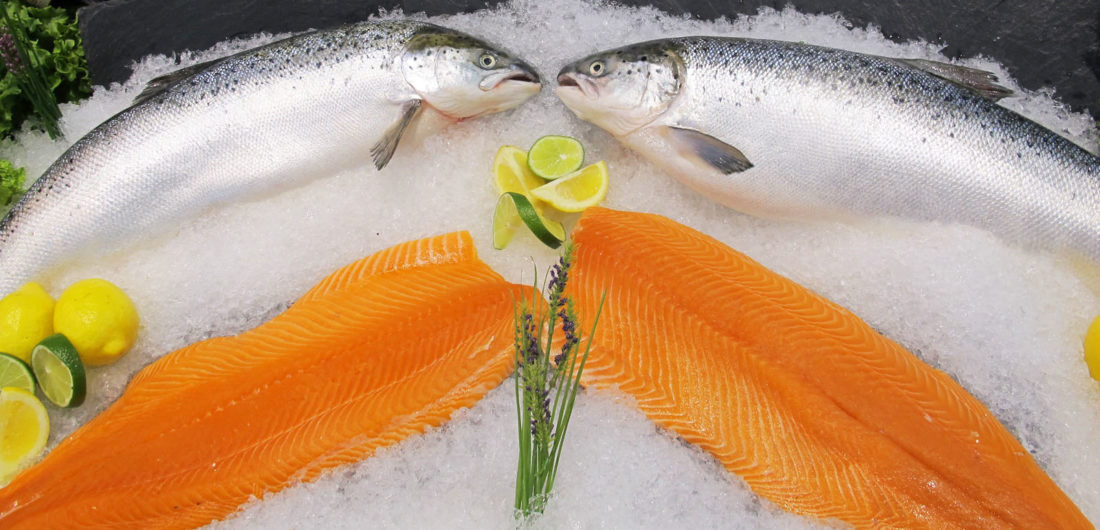At the Boston Seafood Show, I attended several seminars that addressed the question of why Americans aren’t eating more fish. According to the latest data from the National Oceanic and Atmospheric Administration, Americans eat 15.8 lbs of seafood per capita, a figure that has been flat or declining for the last decade or so now. In this gathering of seafood retailers, suppliers and restaurateurs, we dove into the psyche of the elusive consumer and tried to figure out what drives seafood sales. Price? Health? Sustainability? As it turns out, the answers are as complicated as the seafood industry itself.
Not surprisingly, price was cited as a deterrent for many consumers from purchasing seafood. With the uncertain economy and higher food and fuel prices, many households are scrimping on groceries and substituting other options, like cheaper cuts of meat. But is seafood really more expensive than meat? While some products have certainly gone up in price, there are other alternative that are more affordable. Tilapia and hake were cited as examples of great fish at reasonable prices.
Meanwhile, cost per portion is quite different from the price you see per pound. Fishmongers like to display large cuts of fish in their display cases, and while this does make for a dramatic presentation, it leaves the consumer feeling uncertain about how much he’s actually spending. In reality, he might only need 5 ounces of fish and the cost might be $2 per portion. Instead of facing a sign for fish at $20/lb, would you feel more comfortable buying seafood servings that are clearly marked with per portion costs?
Education and transparency are also keys to driving seafood purchases. Many people still feel anxiety about purchasing and preparing seafood, worry that their kitchen will smell fishy, and are concerned about the safety of seafood. Hence, it’s critical to have staff who can demonstrate how to cook seafood and offer samples. The seafood’s origin and catch method should be marked, along with certifications for sustainability or antibiotic/hormone-free products. This level of traceability can be made even more sophisticated with smartphones. In Boston, the restaurant Taranta uses scannable QR codes that allow diners to see where their meal was caught. Talk about transparent!
The issue with premium seafood products is that consumers may not be willing to pay for them, rendering sustainable seafood economically unsustainable. In a study conducted by Cornell University and Seafood Source, consumers were asked how much they’d be willing to pay for seafood with a variety of attributes, such as U.S. raised, wild-caught, antibiotic/hormone-free, etc. The results? Consumers were only willing to pay 76 cents more on average for “fresh” seafood, and 42 cents extra for “frozen” seafood. The price premiums for the other characteristics were insignificant. This type of purchasing behavior does not bode well for sustainable seafood producers, and suggests that the need for further education is high.
For consumers who reported purchasing more seafood than before, the primary reason cited was health. It seems that the word is finally getting out that seafood is a nutritious, lean protein source, full of Omega-3 fatty acids and linked to lower rates of cardiovascular disease. Linda O’Dierno from the National Aquaculture Association commented that she recently read an article that recommended ordering seafood on blind dates because it shows that you’re “sexy and cosmopolitan.” Seafood is uniquely fun and good for you!
Overall in 2011, salmon and tilapia were the most popular seafood products, comprising 8 of the top 10 best selling items. Prepared seafood also saw lots of growth—think of the proliferation of sushi trays you’ve seen in every corner deli and convenience store. Oyster sales are also on the upswing, as oyster bars gain in popularity and people try to replicate those experiences at home.
For Element Seafood as a distributor, we work with restaurants and retailers on a daily basis, and know how important it is to understand the product. We make strong efforts to teach chefs and staff about where our seafood comes from, how to use it and present it to customers. Our expertise can also be transferred to diners and consumers.
So, how have you changed your seafood purchasing habits in the last year or two? Are you buying more or less, and why? How much are you really willing to pay for certified sustainable or antibiotic/hormone-free seafood?
We’re excited to see where seafood goes next, and can’t wait to rise to the new challenges of education and transparency!
Previously: Inside the 2012 Boston Seafood Show
